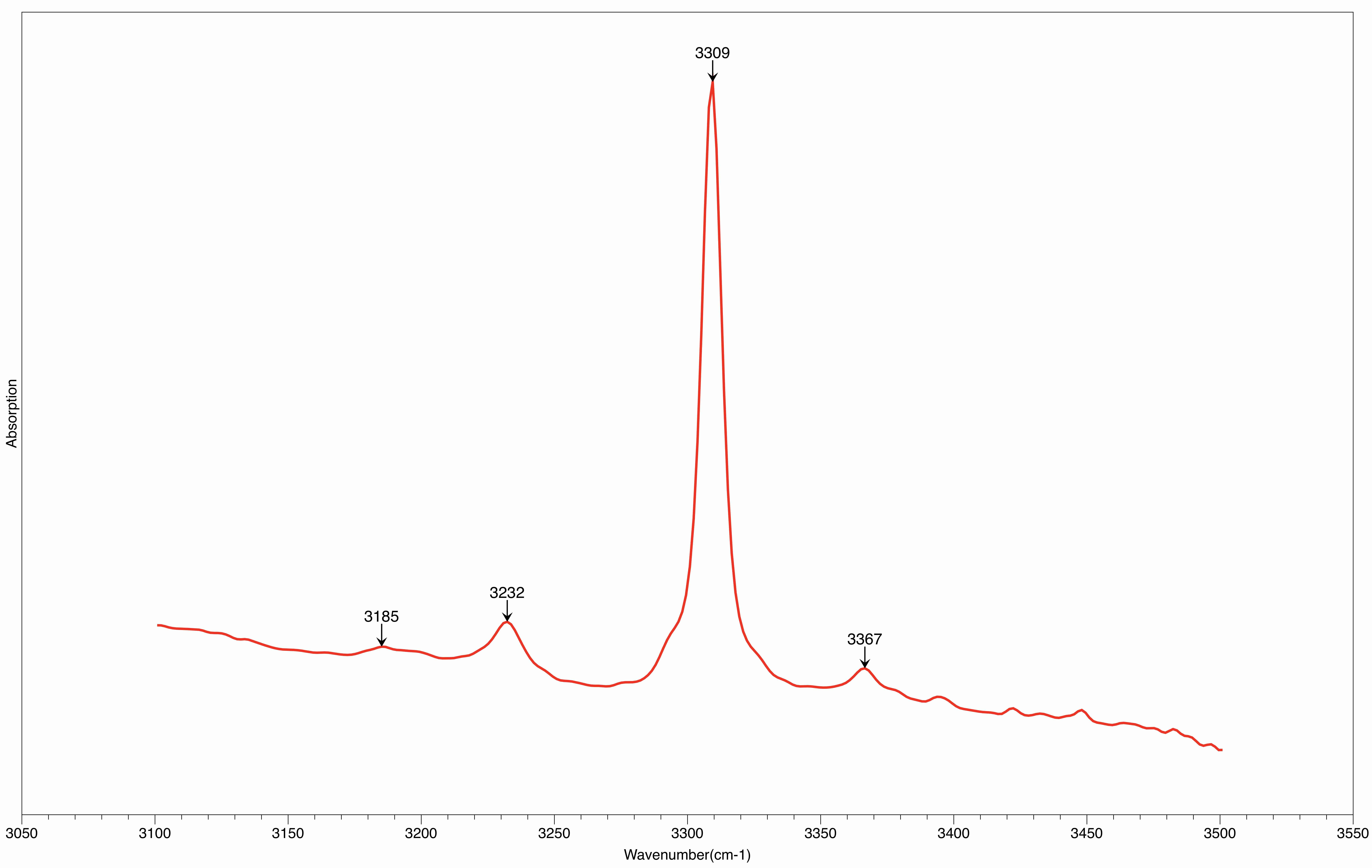Jan 30, 2023
ONLINE MESSAGE
GUILD looks forward to your suggestions.
If you have any cooperation or consultation, please feel free to contact us.
November 2019
Recently, a 2.05 ct blue sapphire was sent to Guild Gem Laboratories for identification (figure 1). Standard gemological testing confirmed it was corundum, with a refractive index of 1.762–1.770 and specific gravity of 4.00. Under microscopic observation, cloudy particles and diffuse straight color zoning were seen, as well as fingerprint-like fluid inclusions as shown in figure 2, indicating that this stone had undergone thermal enhancement. This sapphire exhibited chalky greenish fluorescence around the girdle under short-wave (254 nm) ultraviolet fluorescence light. Further UV-Vis spectroscopic testing suggested a metamorphic origin, while FTIR spectra (figure 3) showed a distinct 3309 series at 3185, 3232, 3309, and 3367 cm–1, confirming heat treatment. Energy-dispersive X-ray fluorescence (EDXRF) showed an Fe content around 300–500 ppm. Neither U nor Th was detected.

Figure 1. Thermal enhancement and unusual inclusions were detected in this 2.05 ct blue sapphire, measuring 7.07× 6.55×4.99 mm. Photo by Kaiyin Deng.

Figure 2. Left: Dendritic inclusions consisted of dot-like minerals showing a"melted and diffused" appearance. Photo by Yujie Gao; field of view 2.68 mm. Center: Resembling a tree root, these dendritic inclusions showed relatively strong metallic luster under reflected light. Photo by Yizhi Zhao; field of view 2.52 mm. Right: Dendritic inclusions coupled with blurred blue color zoning. Photo by Yujie Gao; field of view 9.73 mm.

Figure 3. The sapphire’s FTIR spectrum exhibited a distinct 3309 series at 3185, 3232, 3309, and 3367 cm-1.
Also observed were interesting dendritic inclusions, which are not very common in sapphire. These inclusions showed relatively strong metallic luster under reflected light, and they appeared to be opaque under transmitted light. Lines of small dots were seen under higher magnification. These dot-like inclusions exhibited a blurred surface and a rounded shape. Raman analysis at the National Gemstone Testing Center (NGTC) using a 473 nm laser showed three distinct peaks at 466, 552, and 607 cm–1, matched very well with thorianite, according to the RRUFF online database (rruff.info), as shown in figure 4.

Figure 4. Raman spectra of the sapphire’s dendritic inclusions matched with thorianite (ThO2).
Thorianite (ThO2) is an oxide mineral mainly composed of Th and O, first found in an alluvial deposit in Sri Lanka (D.Wyndham, “The occurrence of thorium in Ceylon,” Nature, Vol. 69, 1904, pp. 510–511). A melted appearance of a mineral inclusion and/or unnatural-looking discoid fractures around inclusions can be indicative of heat treatment in corundum. Such phenomena are normally attributed to the breakdown of mineral inclusions at high temperature. However, the thorianite inclusions here did not have the typical appearance of inclusions that have been altered by high-temperature heat treatment. The diffuse appearance of thorianite is unlikely to be an indicator of heat treatment. Further experiments and tests on thorianite in unheated sapphire would give us more clues in the future.
(This article was first published in Gems & Gemology, 2019, Vol. 55, No. 3, pp. 447-448)
GUILD looks forward to your suggestions.
If you have any cooperation or consultation, please feel free to contact us.